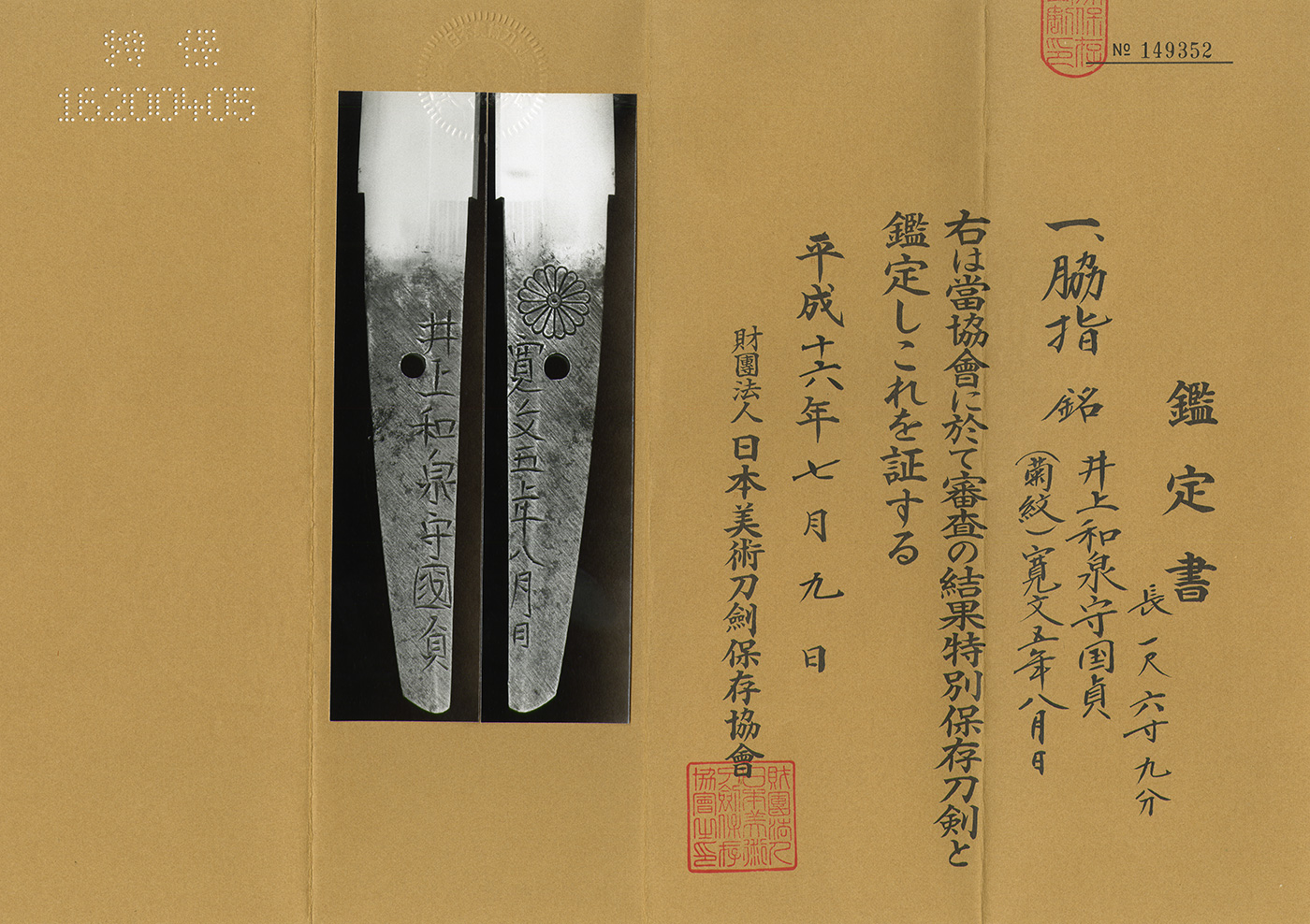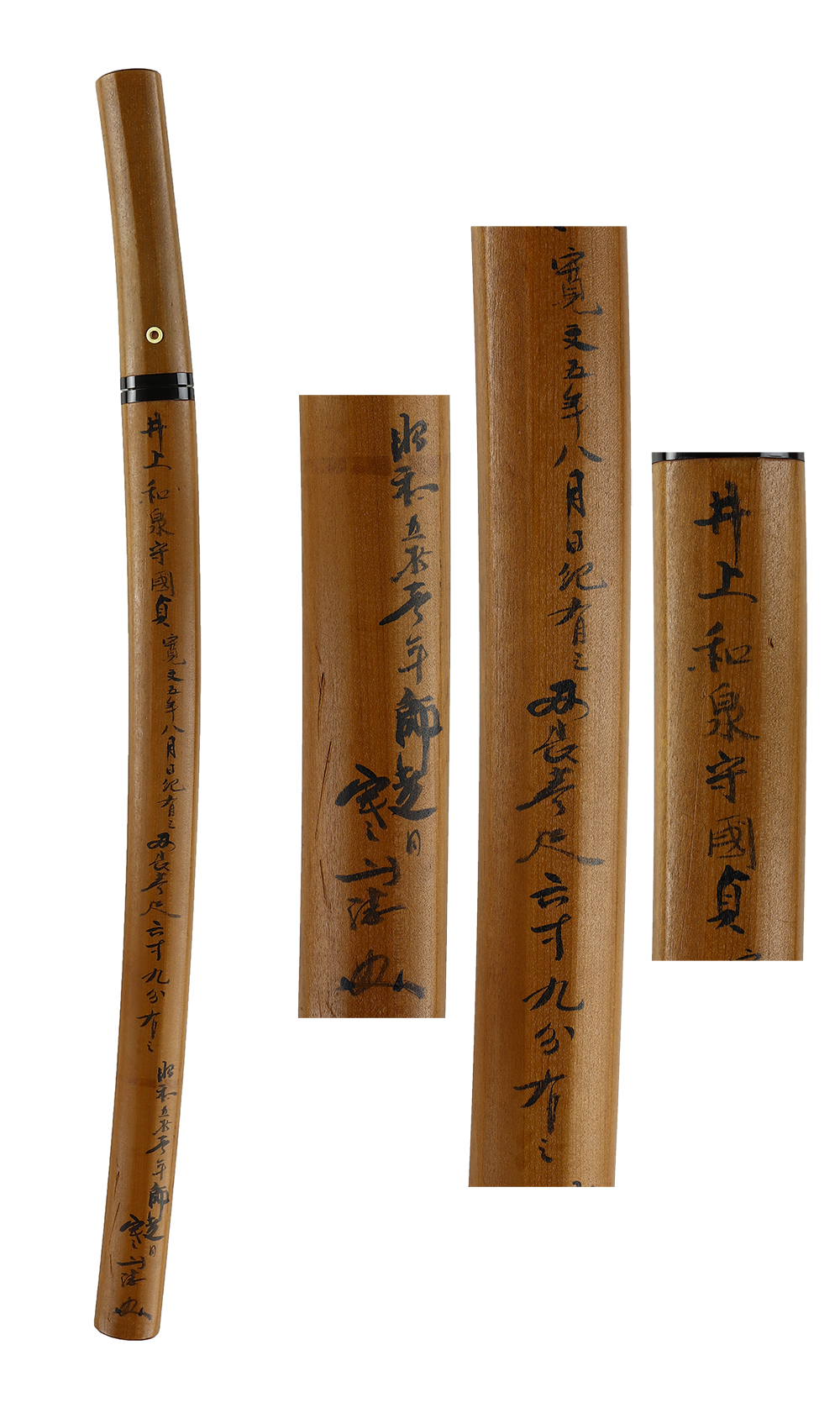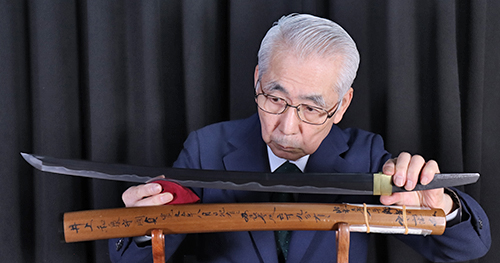Ordering number:23831
Wakizashi in Shirasaya (NBTHK Tokubetsu Hozon Token)
Signature: Inoue Izuminokami Kunisada
Kikumon, Kanbun 5 Nen 8 Gatsu Hi (August 1665)
井上和泉守国貞
菊紋 寛文五年八月日
Sayagaki: Inoue Izuminokami Kunisada,
a piece from the August of the fifth year of Kanbun. A blade length of 1 Shaku 6 Sun
Written by Dr. Kanzan in Showa 52(1977)
(We divide 4 sections for each sword as Saijyo saku, Jyojyo saku Jyo saku and regular saku)
This sword belongs to Jyo Jyo Saku ranking.
Polished
Habaki: Gold foiled double habaki
Blade length: 51.4 cm (20.24 in)
Curvature: 1.0 cm (0.39 in)
Mekugi hole: 1
Width at base: 3.12 cm (1.23 in)
Width at the tip: 2.24 cm (0.88 in)
Thickness of rim (Kasane): 0.67 cm (0.26 in)
Sword weight: 600 grams
Era: Edo period, around Kanbun (1665)
Shape: The work has a broad body and shallow curvature typical of Kanbun Shinto, with a slightly extended kissaki, making for a well-proportioned shape with beautiful jigane.
Jigane: The steel is fine ko-itame hada, tightly packed, typical of Osaka steel, resulting in a beautiful skin.
Hamon: From the boiling point, the blade features a straight pattern transitioning to a midare pattern, returning in the style of three sanbonsugi.
Aoi Art’s Comment: This Inoue Shinkai is a work from the fifth year of Kanbun, changing its signature to Inoue Shinkai in the second year of Enpo. Because the first generation Kunisada became elderly, early productions were assisted by Izuminokami Kunisada as substitute. Around the fourth year of Manji, a sword was dedicated to the imperial court, and as a reward, he was granted the chrysanthemum crest, initially signing as Izuminokami Kunisada and changing to Shinkai in August of the twelfth year of Kanbun. He passed away in November of the second year of Tenwa. Inoue Shinkai is equally celebrated alongside Tsuda Sukehiro, both swordsmiths highly regarded with some joint works between Sukehiro and Shinkai. Previously questioned or denied works have been recognized as authentic through research, highlighting the impact of their friendship on their creations. Generally, Sukehiro is known for dynamic wave patterns, while Shinkai for straight patterns with deep nioiguchi.
Historical context: From the Muromachi to the Edo period, as the demand for swords significantly declined, swordsmiths had to innovate to survive. Techniques such as gold inlay signatures, intricate blade patterns, and carvings on swords became popular, moving towards creating swords that were more visually stunning than practical for battle. The transition from the Kan'ei to Kanbun period saw changes in production methods, largely due to the spread of dojos, which provided a safe space for combat training, becoming accessible to the general public as well.
NBTHK Tokubetsu Hozon Token
AoiArt estimation paper
Whole Oshigata
Order Form
Related Items:
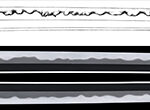 Wakizashi:Izumi Kami Fujiwara Kunisada (first generation)
Wakizashi:Izumi Kami Fujiwara Kunisada (first generation)
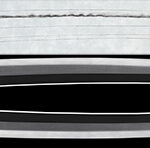 Wakizashi:Tsuda Omi no Kami Sukemnao(NBTHK Tokubetsu Hozon Token)
Wakizashi:Tsuda Omi no Kami Sukemnao(NBTHK Tokubetsu Hozon Token)
 Wakizashi:Echigo no Kami Kanesada(NBTHK Tokubetsu Hozon Token) (Consignment Sale)
Wakizashi:Echigo no Kami Kanesada(NBTHK Tokubetsu Hozon Token) (Consignment Sale)
 Wakizashi:Ozaki Minamoto goemon Suketaka Kansei 9 Nen 8 Gatsu Hi(August 1797)(NBTHK Tokubetsu Hozon Token)
Wakizashi:Ozaki Minamoto goemon Suketaka Kansei 9 Nen 8 Gatsu Hi(August 1797)(NBTHK Tokubetsu Hozon Token)
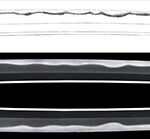 Wakizashi:Doi Shinryo(NBTHK Tokubetsu Hozon Token)
Wakizashi:Doi Shinryo(NBTHK Tokubetsu Hozon Token)
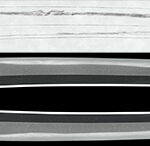 Wakizashi: Bichu Kuni Mizuta Ju Kunishige
Wakizashi: Bichu Kuni Mizuta Ju Kunishige



